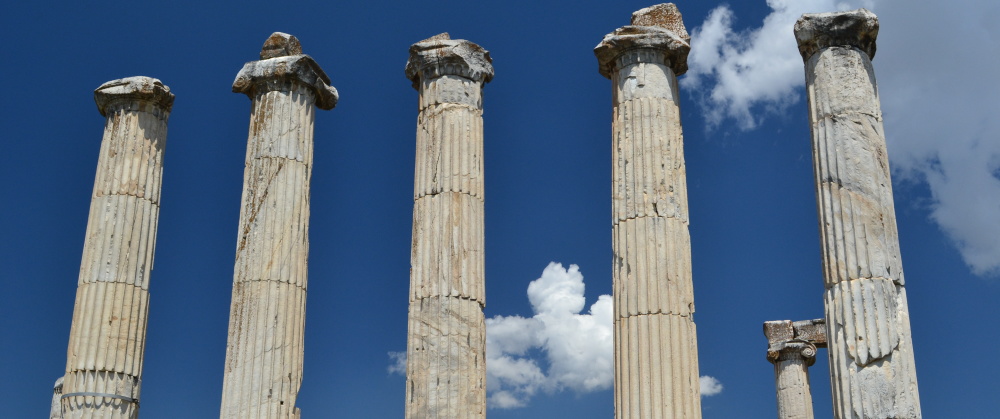One of my goals in my book, Paul and Imperial Divine Honors: Christ, Caesar, and the Gospel (Grand Rapids: Eerdmans, 2024), is to demonstrate the diversity of Julio-Claudian imperial divine honors in the Roman Empire and that no such thing as “the imperial cult” existed. This is evident from a contextual examination of grants of such honors.
For example, in Rome and her colonies, imperial divine honors tended to be given to deceased Julio-Claudians whom the Roman Senate deified and provided a temple, cultic statue, altar, priests, sacrifices, festivals, and the official title Divus (for a male Julio-Claudian) and Diva (for a female Julio-Claudian). Because this deification tended to be reserved for Julio-Claudians who advanced the interests of Rome and her empire, not every emperor or Julio-Claudian was hailed as a Divus. For a list of these divi (the Latin plural of divus), see p. 43 of my book.

In Greek provinces, a group of provincials most often worked with the Roman provincial administration, the Roman Senate, and the reigning emperor to determine which Julio-Claudian would be given divine honors, where they would be located, and of what the honors in question would consist. These provincial honors were usually bestowed on living Julio-Claudians, but official documents associated with them tended to avoid calling the honored a “god” (theos in Greek). Moreover, the reason for their establishment was typically to be show gratitude for imperial benefaction and to court such future munificence.
Greek cities most often provided imperial divine honors to living Julio-Claudians to render appropriate gratitude for a specific beneficence and to court more acts of charity. Once the Julio-Claudian divinely honored died and thus could no longer benefit Greek cities concretely, they tended to lump that imperial into a growing number of divine imperials known as Augustan gods, θεοὶ Σεβαστοί (with the emperor Augustus being the chief exception). The traditions by which cities honored divinely the Julio-Claudians were local and some of them stretched back to Hellenistic period of Greek history and even beyond. Therefore, such honors were diverse. Given that there was no Roman oversight of these grants of divine honors, denizens of cities were free to call living or deceased Julio-Claudians “gods” or manifestations of the Olympians.

Finally, ancient Greeks and Romans divinely honored Julio-Claudians, both dead and alive, in their own homes, to varying degrees, and for varying reasons. For example, archaeologists working in Ephesus found a domestic imperial shrine in an elite apartment (insula) in a house in a block of such apartments (insulae) known as Terrace House 2. The shrine dates between AD 14 and 37 and consists of busts of Tiberius and Livia that had been set in a domestic shrine in a niche in the wall.


For the shrine, see Elisabeth Rathmayr, “New Evidence for Imperial Cult in Dwelling Unit 7 in Terrace House 2 in Ephesos,” in Ephesos as a Religious Center under the Principate, ed. Allen Black, Christine M. Thomas, and Trevor W. Thompson, WUNT 488 (Tübingen: Mohr Siebeck, 2022), 9–35. Often, scholarly works reference a bronze snake that was found with Tiberius’s and Livia’s busts. However, Rathmayr demonstrates that this is not the case and that the snake was placed in front of the niche much later.
In short, to quote Nijay Gupta’s excellent blurb about my book, “imperial divine honors were everywhere . . . [but] they were not everywhere the same.” This means that the early Christian interactions with them were not uniform and must have varied from city-to-city and province-to-province. For more on these interactions, check out my new book!

